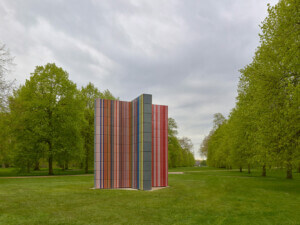In Issue 8 of their published manifestos, Archigram noted that over time they had become increasingly concerned with matters relating to the human experience: “comfort, facility, satisfaction, enquiry, and above all the effect of all kinds of phenomena upon each other.” Upon entering Peter Cook’s recent show at the Richard Saltoun Gallery, this fascination with phenomenology was glaringly evident. Featuring works made from 1964 through to 2023, the show also highlighted a number of Cook’s other key touchpoints.
The exhibition did not include any drawings or artworks relating to built work, yet the range of conceptual explorations makes up for this, with drawings, collages, watercolors, and sculptures that feel free of boundaries. Buildings as assemblages of programmatic vessels, impermanent architectural forms, and the power of the grid all represent some of the ideas and graphic techniques that were the mainstay of Cook’s career. The show opened with the riotous Installation: Cities, a mélange of forms twisting dexterously over one another. In this piece, there is no discernible axis for orientation: a new form of synthetic nature has taken over and a technicolor walkway invites us into a wild world.
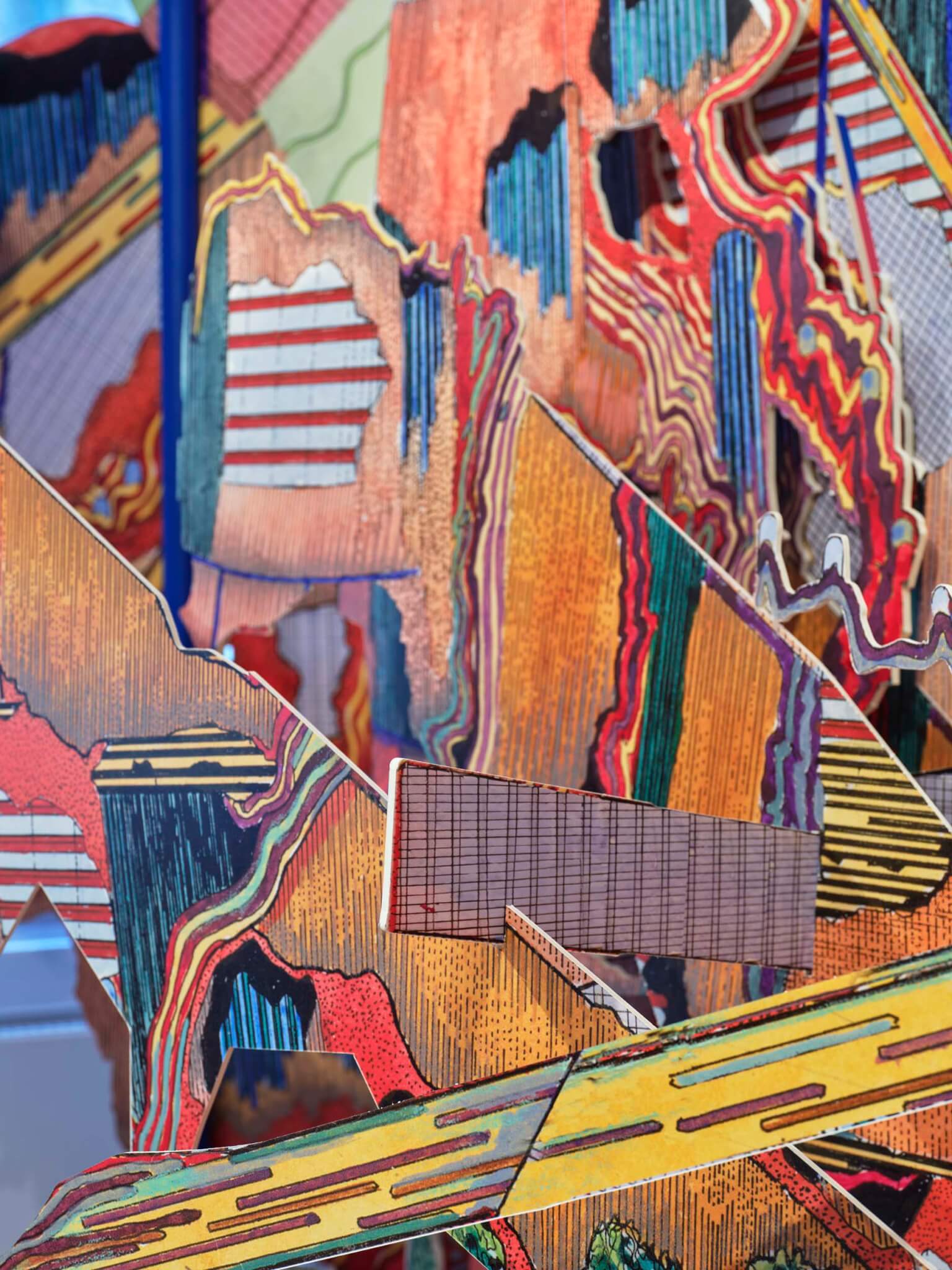
The exploration of materials, both garish and sublime, is also present in Sky Waft City, 1985, where shimmering, pliant walkways ascend between globular, furry masses. Presented as a quadriptych, these drawings have an otherworldly quality and though stippled and airbrushed almost forty years ago they still hold viewers’ attention today.
These graphic and formal ideas reemerge in Filter City, a virtual reality video which builds upon ideas tested in earlier works and now translated into digital media. Putting on the headset is a thoroughly destabilizing experience, almost like stepping into the landscapes of Cook’s mind. Users parachute into an unknown terrain where spindly scaffolding stretches into the distance and translucent shards jut from the sky, forming both floor and wall. In this transient space, looking down reveals the only perspectival vanishing point: a rainbow of colors disappearing into a red dot.
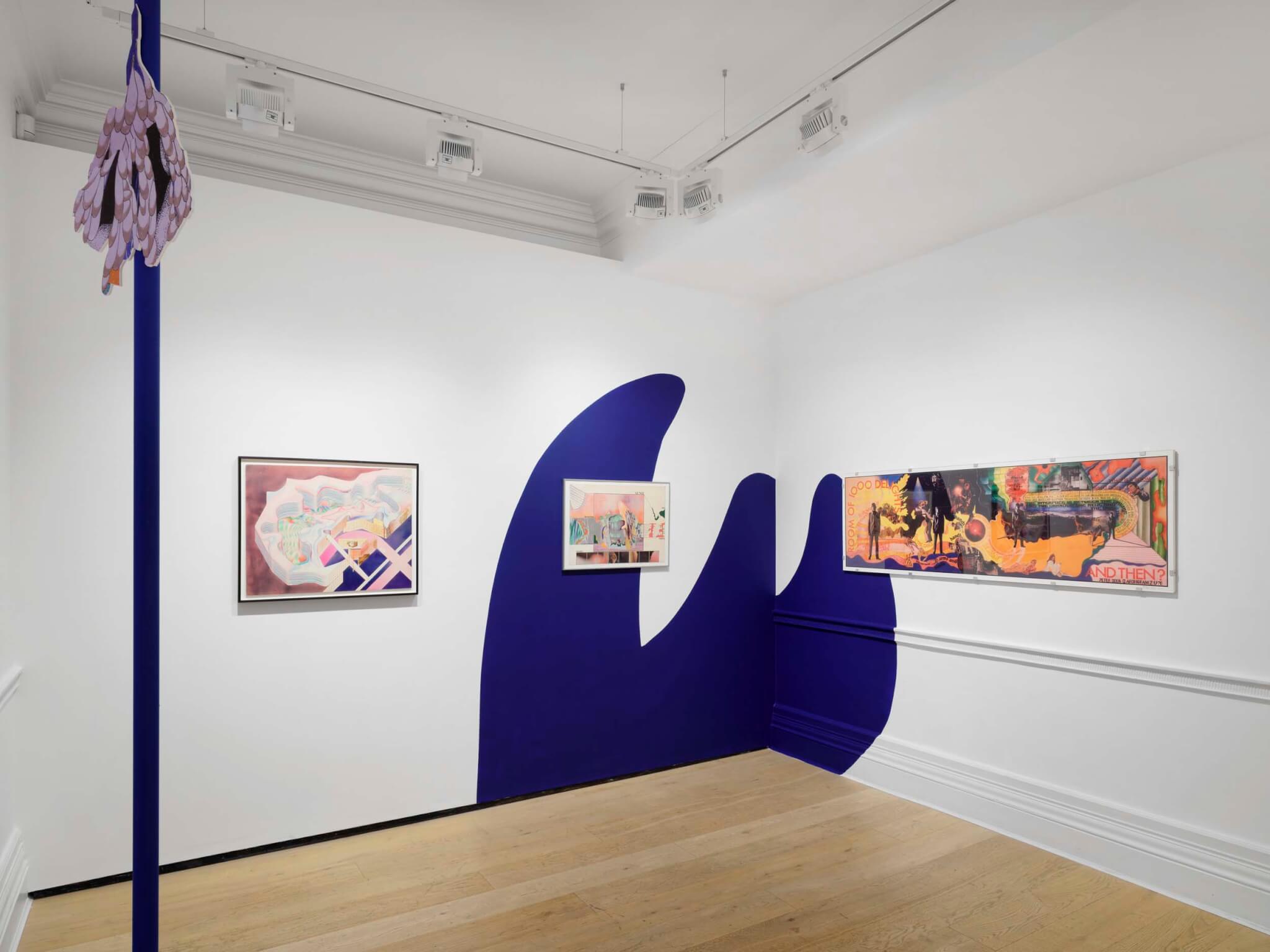
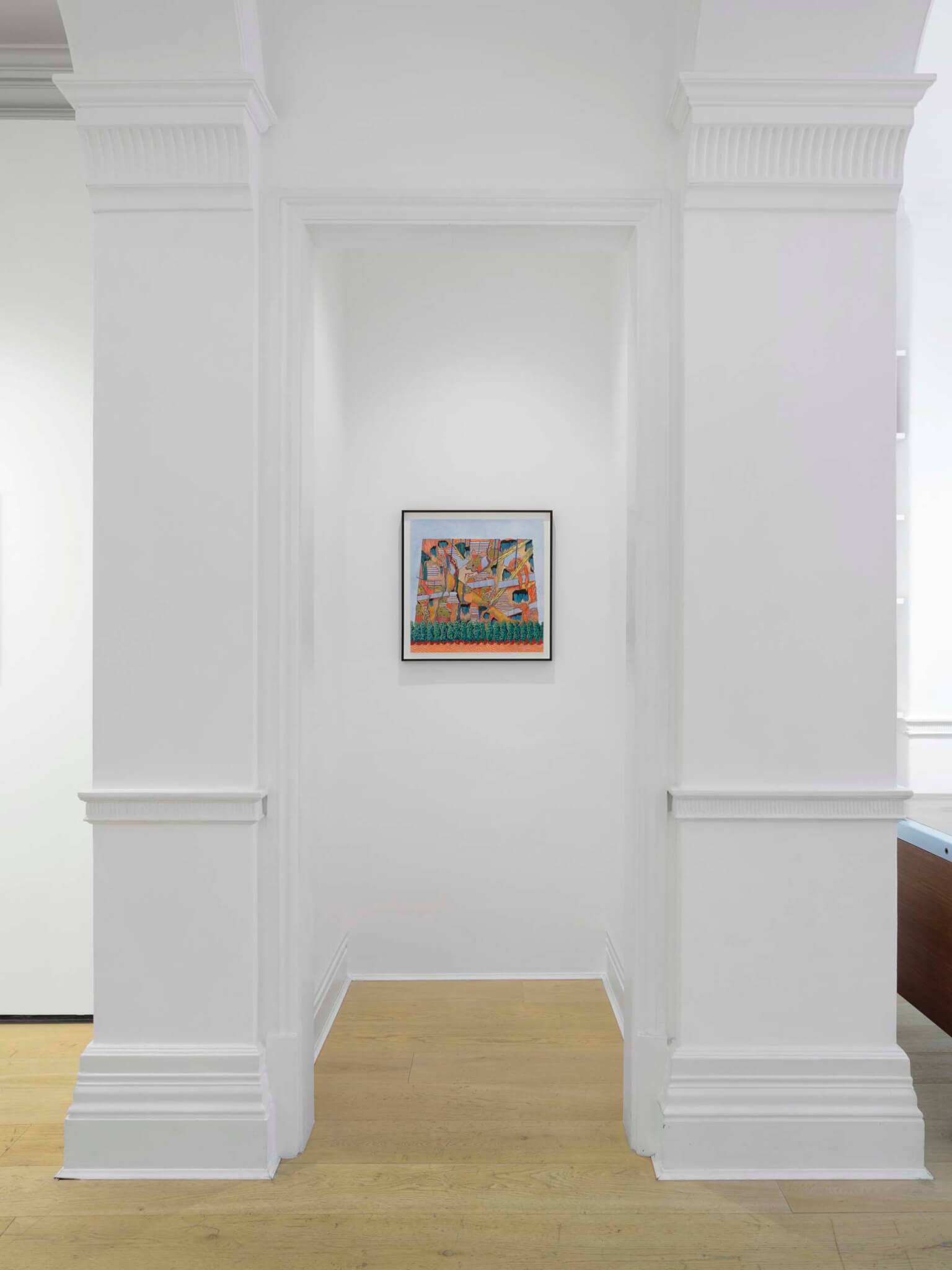
Even without the titillation of a VR headset, the works shown clearly tie together by an exploration of modernity, or perhaps more accurately, what lies beyond modernity. The series of Arcadia works from 1976–78 are particularly pronounced in challenging the status quo. Conversationally, Cook emphasizes that for him, these works were not about positing a new ideal or generalized utopia, but instead capturing a sense of how specific individuals might live within a collective. Hence in Arcadia A, visually simple forms are set within formal gardens fit for rural retirees, and in Arcadia C, a seductively twisting form breaks the grid with high-gloss surfaces and transparencies that cater to the longing stares of young hedonists.
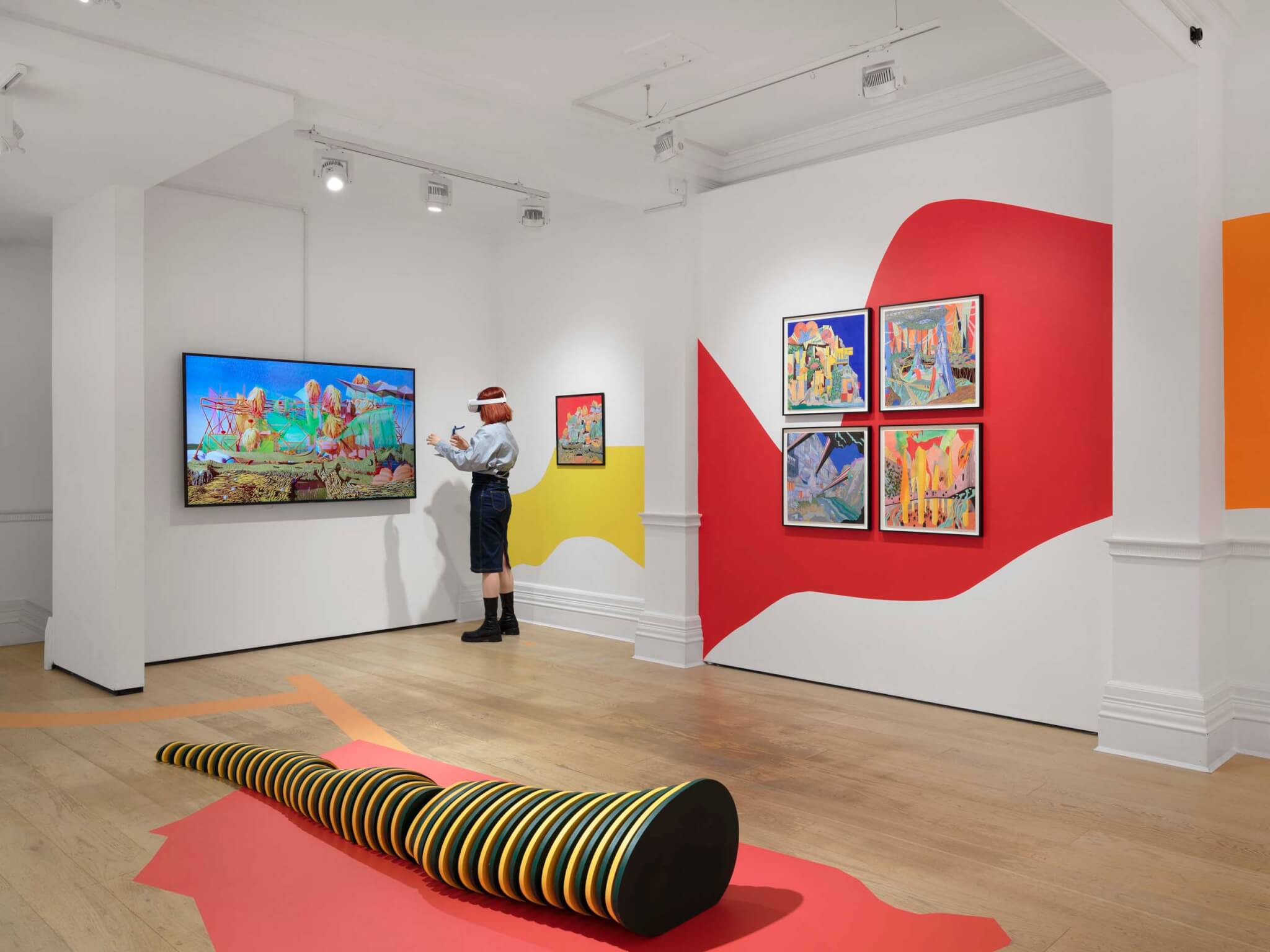
Given the themes that Peter Cook has been revisiting for the last 63 years, it’s unsurprising that between Plug-in City, Arcadia B and Sky Waft City there is a visual link to ideas that seem evident in proposals for The Line by NEOM (Peter Cook’s studio is one of 12 named on the scheme). However, as they are disconnected from matters of materiality and livability, the drawings within this exhibition go further than any built work is likely to: tearing at the edges of hybridity and typology. In an interview with Katrin Förster, Cook once spurned the way that many designers and thinkers “limit themselves or, edit ourselves, into an impasse.” This collection of work is therefore the fruit of a mind that is continually seeking to explore place and the graphic methods of description without restriction.
Josh Fenton is an architectural writer and communications consultant based in London.









